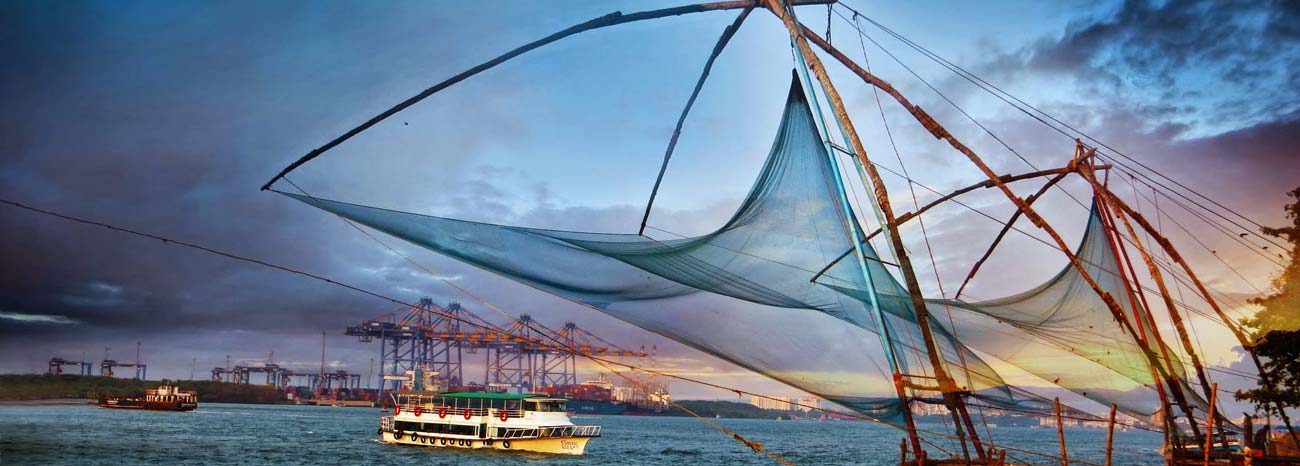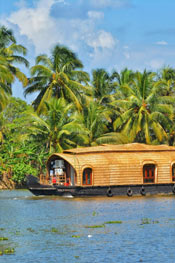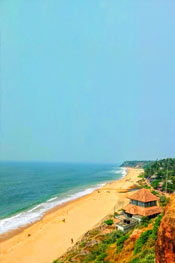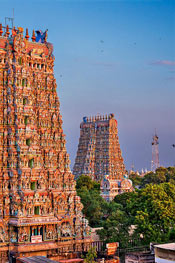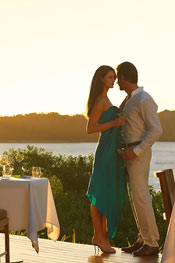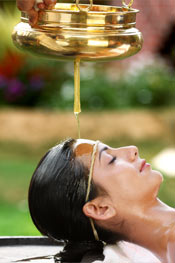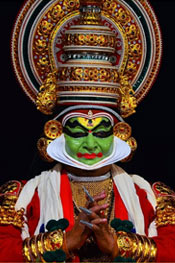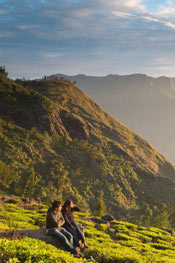Cochin / Ernakulam Tour
| Location | Ernakulam district of Kerala |
| Main Attractions | Temples, Chinese fishing net, spice market and Dutch palace |
| Languages Spoken | Malayalam, Tamil, English and Hindi |
| Climate | Average temperature ranges from 20°C - 35°C |
| Best Time to Visit | Throughout the year |
Popularly known as the "Queen of the Arabian Sea", Cochin is a mesmerizing tourist destination of Kerala. It is one of the finest natural harbours in the world and the second largest city in the state. Cochin enjoys a cosmopolitan culture with a secular and varied community. Its bewitching attractions attract many a tourist from all over the world. It is located in the district of Ernakulam, roughly 220 kilometres north of the Thiruvananthapuram, the state capital.
Area and Population
Covering an area of 94.88 sq km, Cochin has a population of around 1.5 million.
History
Cochin was (and still is) a significant spice trading centre on the Arabian Sea since the 14th century. There are scores of mythical anecdotes regarding the legendary name of the city, Kochi. It is believed that the ancient city of Balapuri (meaning 'small town') has been renamed as Cochin over the years. However, the city went back to its original Malayalam name, Kochi, in the year 1996, although the former name still tops the worldwide popularity index as one of the most sought after tourist destinations.
Flora and Fauna
Kochi is an ecologically susceptible area - with a wide range of mangrove species, bird sanctuaries (e.g. the famous Mangalavanam Bird Sanctuary) and dolphins in the backwaters.
Cochin Attractions
St. Francis Church
It is believed to be the oldest existing European Church built by Portuguese Franciscan friars in 1503, who had convoyed the Portuguese mission to the east. Although the original structure was built of wood, in the mid-16th century it war renovated and rebuilt in stone. According to popular belief Vasco Da Gama was buried here after his death in 1524. However 14 years later his remains were sent to Lisbon. Now the church is administered by the Church of South India. Unique gravestones can be witnessed in the churchyard.
It was the first of its kind, a church, constructed in the Portuguese style with an enormous arch at the foyer with tainted glass windows. The authority over this church kept changing over the period of time. It was maintained by the Dutch when they had overthrown the Portuguese, followed by the British at the time they had forced out the Dutch from the land. One distinctive feature of the church is the rope- operated wood-and-cloth fans or pankhas which can still be seen, holds the attention of a visitor.
Chinese Fishing Net
It is one of the main attractions of Kochi, at Fort Kochi, which beckons tourists from far off places to witness the pleasure of fishing. One can buy fresh fish near the Chinese Fishing Nets and enjoy the luxury to get them cooked in any nearby stall in exchange of a small amount.
According to popular verbal accounts, the word 'Chinese' is prefixed to these nets, most likely because earlier Kerala had business associations with China. Possibly the Chinese traders left this ongoing legacy to the people of the state of Kerala. The Chinese fishing net is a mammoth mechanism. A giant wooden scaffold supports the nylon net which is set up on two axis poles attached to a base. As a rule three or four men work on the net. Predominantly the fresh water fish that drift towards the shoreline, are trapped in these Chinese fishing nets. The Chinese fishing nets very aptly have proved to be the only effective means of fishing in the backwaters of Kerala over the period of time.
Spice Plantations & Markets
The history of spice plantations in Kerala dates back to olden times. During the erstwhile eras, the Greek, Roman, Chinese and Arab traders visited the Muziris (Kondungallur) on the Malabar Coast in search of Indian commodities. A variety and an exclusive range of spices like cloves, cinnamon and cardamom and pepper were the particular preferred items of the travellers of the foreign countries. The Romans were the great buyers of the Indian spices in large quantities in Europe.
In the Idukki district of Kerala on the southwest coast of India there is a small village called Mannathara. This village is well known for its supreme quality of black pepper. Black pepper and cardamom from this area had been considered as an extraordinary quality in the Mattancherry spice market in Cochin. Kochi has become the commercial capital, a meeting junction for traders dealing in spices.
It is a matter of pride for India that Kerala used to be and continues to be the largest spice producing region of the country. The intoxicating aroma of exclusive array of spices wafting in the air fills one's mind with absolute delight!!!
Kathakali Dance Shows
Kathakali is one of the main dance forms of India. It is generally displayed in the form of ballet or dance-drama. Ideally, Kathakali insinuates the depiction of a story in the manner of a play. This form of ballet has originated from a feud between two royal families. Whereas one of them showcased the dance-drama in Sanskrit, circling the life of Lord Krishna (Krishnattam), the other ruler depicted the life of Lord Rama through his ballet (Ramattam).
Thus Kathakali is supposed to be the fusion of both the styles along with poetic transcriptions in Sanskrit blend with Malayalam. The performance is actually the dramatized presentation of a play. Conventionally, Kathakali is performed solely by male dancers, who make use of detailed and extremely stylized make-up and attires to portray epic characters from the Ramrayana, the Mahabharata, and the Puranas.
Most Kathakali characters wear towering headgear, billowing skirts and abundant ornaments. Conventionally the dance was performed in the temple grounds and kept going throughout the night-time. Usually, two vocalists sing the story complementing the Chenda (drum), cymbals and a gong, which the dancers recite through well defined actions and mudras or hand gestures, without being vocal at all.
Mattancherry / Dutch Palace
The Mattancherry Palace, also known as the Dutch Palace at Mattancherry, Kochi, in Kerala, features murals depicting Hindu temple art, portraits and exhibits of the Rajas of Cochin. The Mattancherry Palace with its medieval charm is situated at Palace Road, Mattancherry, Kochi.
To safeguard trading liberties, the palace was presented to the king or Raja of Cochin by the Portuguese who built the palace in the year 1555.The palace was renamed as the Dutch Palace after it was refurbished in the year 1663 by the Dutch, at the time they conquered and ruled Kochi. It is one of the oldest edifices in the state.
The beautiful frescos in the Coronation Hall in the second floor of the building depict scenes from the ancient epics of Ramayana and Mahabharata. There are also few articles exhibited which were used by the royal kings like their turbans, dresses and palanquin lined with ivory. The tourists visiting Kochi make sure that they visit this ancient work of architecture and get a taste of the royal life of the erstwhile times, witnessing the rich antic pieces of art.
Jewish Synagogue
The spice trafficking region of Mattancherry in Cochin is popularly called as the Jew Town of Kerala. Till date there are quite a number of business sites and buildings having billboards of Jewish names. There are very few Jewish families who still survive in Kerala mostly reside in Kochi. The Pardeshi Synagogue is located in the Jew Town. This is the oldest synagogue in the Commonwealth built in 1568. The Great Scrolls of the Old Testament, their traditional ram's horn trumpet, copper plates on which the endowments of privilege made by the Cochin rulers were recorded in Hebrew script, Chinese had painted willow patterned floor tiles and the synagogue's intricate lighting capture one's interest.
The Synagogue was ruined by the Portuguese in the year 1662 and was reconstructed several years later. Its floorings are made of pale azure and milky white hand dyed floor tiles. Tourists, who come to see this Synagogue, remain bewildered to witness the ancient work of architecture - proudly standing, thereby narrating the accounts of the bygone times to generations after generations!!
Hill Palace Museum
Reflecting the rich cultural heritage, Hill Palace Museum is the first heritage museum of Kerala. Locate ideally on a hillock, the museum is set amidst lush green gardens with fountains and ponds. The museum complex houses around 49 buildings fashioned in the traditional architectural style of Kerala. Once the abode of the rulers of Cohin, the museum was established in the year 1865.
The fourteen galleries of the museum display the rare and wonderful artefacts belonging to the erstwhile rulers of the state. Some of the royal belongings displayed here are paintings, ancient carriages, weapons, statues, beds, murals and ornaments.
The gardens surrounding the museum have been transformed into botanical gardens where a variety of rare medicinal plants are found. Some of the floral species here have been transported from countries like Australia and America.
How To Reach
To reach Kochi, one can avail any of the following options - air, road or rail.
By Air: Kochi/ Cochin International Airport is situated in Nedumbassery, about 29 kilometres from the city.
By Rail: There are two major railway stations in Kochi - Ernakulam Town and Ernakulam Junction - popularly known as North and South railway stations.
By Road: Kochi is reachable from every nook and corner of the state through the extensive run Kerala Road Transport Corporation (KSRTC) bus service.
Accommodation
Cochin offers a wide variety of accommodation options falling into different categories like luxury, deluxe and budget.
Shopping
Cochin is specialized in a variety of aromatic spices and Coir products. Its markets are stocked with these items.

 Russian
Russian Spanish
Spanish Frensh
Frensh German
German Italian
Italian Portuguese
Portuguese Deutsch
Deutsch
